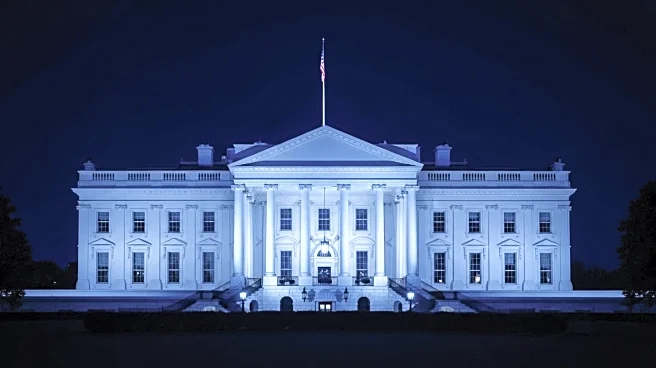What's Happening?
The Trump administration is considering using a government shutdown as a means to permanently reduce the size of the civil service. This move is part of a broader strategy to cut costs and align government agencies with the administration's values. However, the proposed cuts have sparked debate over their effectiveness in enhancing government efficiency. The U.S. federal government employs about 2.9 million people, excluding military personnel, with civilian salaries accounting for approximately 5% of the federal budget. Critics argue that reducing the federal workforce will not result in significant savings, as major budget drivers include Social Security, defense, and Medicare. Additionally, the cuts could lead to a loss of essential skills, as voluntary buyouts often result in the departure of highly skilled workers. This has already impacted agencies like the IRS and FEMA, which have seen significant reductions in their workforce.
Why It's Important?
The proposed cuts to the civil service could have far-reaching implications for the efficiency and effectiveness of government operations. While the administration aims to reduce costs, the potential loss of skilled workers may compromise essential services. For instance, the National Weather Service and FEMA have already experienced staffing shortages, which could hinder their ability to respond to emergencies. Moreover, the cuts could exacerbate existing challenges in recruiting and retaining talent in high-demand areas such as technology and data science. The broader impact on public services and the potential for increased costs in the long term highlight the complexity of implementing such cuts without undermining government functions.
What's Next?
As the Trump administration moves forward with its plans, it is likely to face opposition from various stakeholders, including government employees, unions, and public service advocates. The potential for a government shutdown as a bargaining tool may also lead to political tensions and negotiations in Congress. Agencies affected by the cuts will need to find ways to mitigate the impact on their operations, possibly by reallocating resources or seeking alternative staffing solutions. The administration may also need to address concerns about the long-term sustainability of its approach to government staffing and services.
Beyond the Headlines
The proposed cuts raise ethical and practical questions about the role of government and the balance between cost-cutting and maintaining essential services. The impact on public trust in government institutions and the potential for increased privatization of services are additional considerations. The situation underscores the need for a nuanced approach to government reform that prioritizes efficiency without sacrificing the quality of public services.










